Whether it’s on a bike or a car, safety is always a primary concern when it comes to navigating the roads. That’s why many people consider motorcycle helmets and car helmets to be essential safety features for any vehicle. But if you don’t know the differences between these two pieces of protective equipment, you may not be getting the full benefit of your defensive gear. Explore what sets motorcycle helmets and car helmets apart from each other, so that you can make an informed decision about which will best suit your needs.
Table of Contents
Types of Motorcycle Helmets
Full Face Helmets
Full-face helmets are the most protective and safest type of helmet available. These helmets feature a chin guard that covers your entire face, protecting it from debris and objects while riding. Full-face helmets also typically come with thicker padding, offering maximum protection to the head and neck in the event of an accident or impact.
Open Face Helmets
Open-face helmets offer less protection than full-face models but still provide adequate coverage for your head and face during a ride. These helmets have no chin guard, meaning any impact to the face will not be protected by this type of helmet. Open-face helmets can come with either adjustable or removable visors which protect against sun glare and wind displacement when riding.
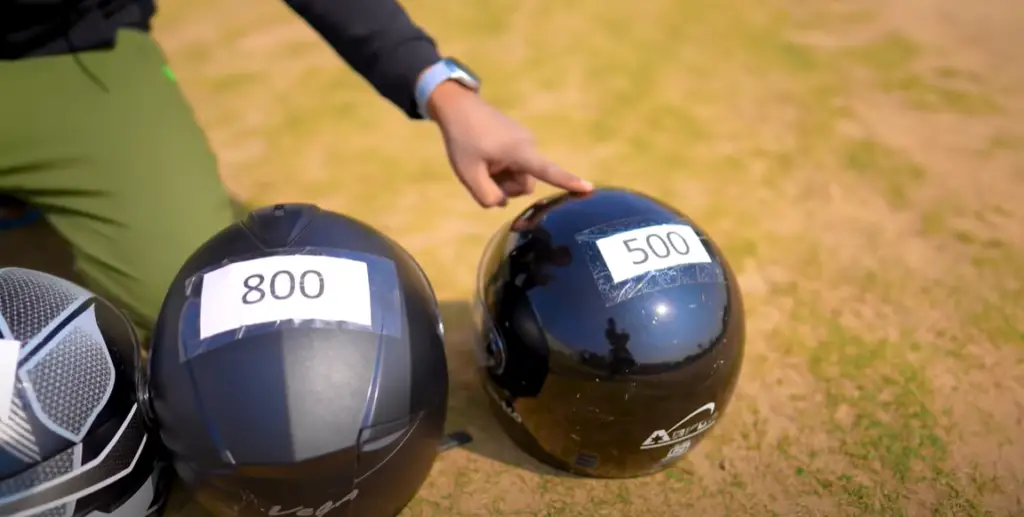
Half Helmets
Half helmets are the least protective type of helmet and generally cover only the top of the head. These helmets do not offer adequate protection in the event of an accident and should only be used by experienced riders who understand the risks associated with riding without full coverage.
Modular Helmets
Modular helmets are a combination of open-face and full-face helmets, offering more protection than an open-face but less than a full-face. These helmets include both a chin guard for maximum face protection and adjustable or removable visors for sun glare and wind displacement. Modular helmets provide a great balance between safety, ventilation, visibility, and comfort.
Off-Road Helmets
Off-road motorcycle helmets are designed to provide additional head and face protection while riding off-road. These helmets feature larger visors, adjustable or removable chin guards, and air vents to provide maximum ventilation while riding on trails or in the dirt. Off-road helmets also typically have thicker padding to protect against impacts should a crash occur.
Dual Sport Helmets
Dual sport helmets are designed to be used both on and off-road. These helmets combine the features of an open-face helmet with those of an off-road model, offering a combination of protection, visibility, and comfort when traversing roads as well as trails. Dual sport helmets usually come with adjustable or removable visors and air vents for maximum ventilation when riding in hot climates.
Novelty Helmets
Novelty helmets offer no protection whatsoever and are generally only used for decoration or fashion purposes. Although these helmets may look stylish, they do not provide any of the coverage offered by other types of helmets and should never be used while riding a motorcycle [1].

How to choose a Motorcycle Helmet?
When it comes to choosing a motorcycle helmet, there are several factors to consider. First and foremost is safety – you need to make sure that the helmet you choose meets or exceeds safety standards and provides the necessary protection in case of an accident. The next important factor is comfort – you need to make sure that the helmet fits correctly and feels comfortable when worn. Finally, style is also an important consideration – do you prefer a full-face helmet, a half-helmet, or something else?
Once you’ve narrowed down your choices, it’s time to try on different models of motorcycle helmets and determine which one is best suited to your needs. Make sure to take your time when trying on different helmets – they should fit snugly but not too tight, and the padding should provide support without feeling too bulky. It’s also important to make sure that the helmet has good visibility so you can see clearly while riding. Finally, check for any signs of damage or wear before making your purchase.
By following these steps, you can be sure to find the perfect helmet for your needs. With a little bit of research and some trial and error, you’ll be able to find the ideal motorcycle helmet that offers protection, comfort, and style [2].
How to choose a Car Helmet?
When it comes to choosing a car helmet, there are several important factors that you should take into consideration to ensure safety and comfort. Firstly, you should always buy a helmet that meets the necessary safety standards of your country or region. Helmet standards can differ from one place to another, so make sure that the helmet you purchase is certified by an appropriate governing body.
Secondly, when selecting a car helmet, consider it’s fit. The most effective way to do this is to buy a helmet at a store where they will help you adjust it properly and make sure it fits snugly and securely on your head. When wearing the helmet, make sure that it does not slip around on your scalp and that there is no uncomfortable pressure on any part of your head.
Thirdly, you should think about the type of material used for the helmet. Make sure that it is made from a strong and resilient material that will offer plenty of protection in case of an accident. Additionally, look for helmets with high-quality air vents to ensure comfort even when driving at higher speeds.
Finally, consider the design and style of the helmet you choose. There are many different styles available today ranging from traditional designs to more modern ones with interesting graphics or reflective surfaces. Most importantly, make sure that whatever design you choose looks great on you and makes you feel secure while driving.
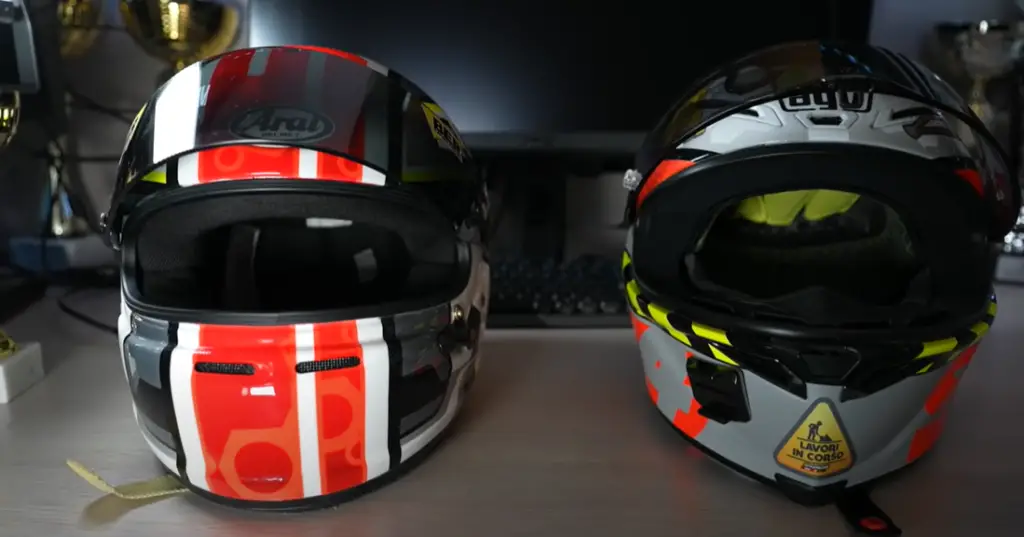
In conclusion, car helmets can be an important safety feature when driving so it is essential to take your time to select the right one. Keep in mind the safety standards, fit, materials, and design of the helmet when you shop to ensure that it meets all your requirements. With a little bit of research, you can find the perfect car helmet for you!
The Differences Between Motorcycle Helmets and Car Helmets
Different kinds of dynamics
Motorcycle helmets and car helmets are specifically designed to withstand different kinds of dynamics. Motorcycle helmets need to protect the rider from unexpected events that can happen while riding, such as a motorcycle suddenly stopping or veering off course unexpectedly. Car helmets, on the other hand, are primarily built to protect drivers in a crash situation by dissipating the energy of an impact through the shell of the helmet and protecting the head from direct contact with any hard surface.
Comfort level
The comfort level of each type of helmet varies depending on its intended purpose and design. Motorcycle helmets typically have more ventilation than car helmets due to their open-face design and lighter-weight materials. This allows for greater air circulation and thus more comfort for the rider. Car helmets, however, are designed to be more aerodynamic and have less ventilation than their motorcycle counterparts.
Protection levels
Motorcycle helmets are usually constructed with higher impact resistance ratings than car helmets due to their heavier-duty construction and thicker padding materials. Motorcycle riders also need greater protection in the event of a high-speed crash, whereas car drivers may only require basic protection from minor impacts at slow speeds. Additionally, motorcycle riders must often face extreme weather conditions such as wind, rain, and even hail that can put additional strain on the helmet’s protective qualities. Car drivers usually do not have to worry about these types of risks which is why car helmets typically have lower impact resistance ratings.
Fire rating
Motorcycle helmets have a higher fire-resistance rating than car helmets. This is because the used to construct motorcycle helmets are more flame retardant. Additionally, most motorcyclists will often ride in areas with high temperatures and other extreme weather conditions that increase their risk of coming into contact with fire. Car drivers, on the other hand, typically do not put themselves in these types of environments as much and so their helmets do not need as high a fire-resistance rating.

Impact absorption
Motorcycle helmets are typically designed to absorb more impact energy than car helmets due to their thicker padding materials and heavier construction. This is because motorcyclists often experience high-speed impacts that require greater protection to avoid serious head injuries. Car drivers, however, do not usually have to worry about such impacts and so their helmets need less impact absorption capabilities.
Provision of HANS device
A HANS device is a device that is designed to reduce the force of an impact in the event of a crash. Motorcycle helmets are required by most motorsports organizations to provide some form of head and neck protection, and as such usually come with provisions for installing a HANS device. Car helmets, on the other hand, are not typically required to have this type of provision.
Visibility
Motorcycle helmets provide better visibility than car helmets due to their open-face design and lighter materials. Car drivers benefit from having more coverage around their faces which helps keep distractions at bay while driving, however, it can also limit visibility in certain situations. Motorcyclists have greater peripheral vision when wearing an open-face helmet which allows them to be more aware of their surroundings and react quicker when needed.
Shape and Ventilation
The shape of a motorcycle helmet is designed to be more aerodynamic than car helmets to reduce drag while riding. Additionally, they are typically constructed with lighter-weight materials that allow for greater ventilation and thus more comfort. Car drivers do not usually have the same concerns when it comes to wind resistance or aerodynamics so their helmets can be bulkier and heavier without affecting performance.
Aerodynamics and Noise
Motorcycle helmets are generally designed to be more aerodynamic than car helmets which helps reduce drag and wind noise. Car drivers, on the other hand, do not usually have to worry about such issues, and as such their helmets may be bulkier and less aerodynamic. Additionally, motorcycle riders often face higher levels of ambient noise while riding due to the open-face design of their helmet and thus they require better noise mitigation features to stay safe [3].
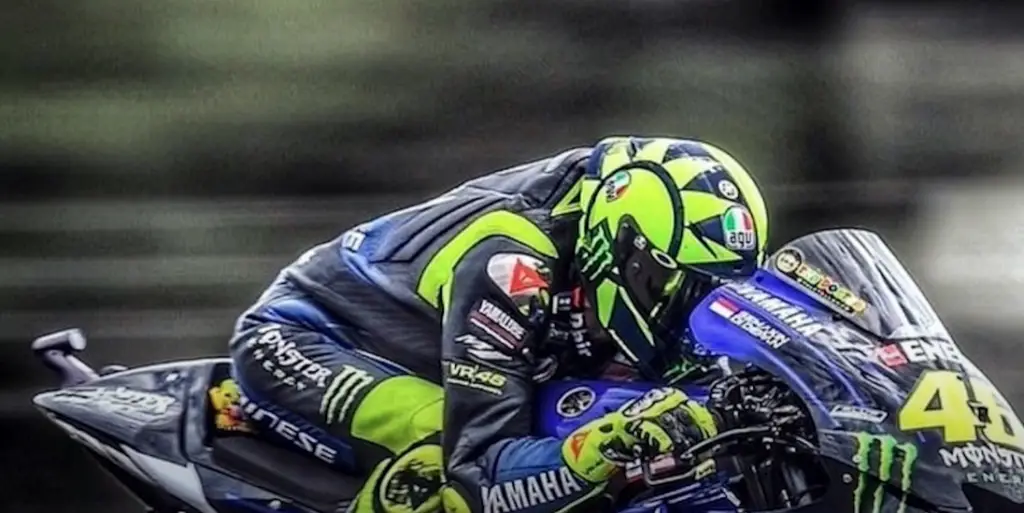
Can Motorcycle Helmets be used for Car Racing?
Motorcycle helmets are not suitable for car racing and cannot be used in these situations. Motorcycle helmets are built to protect in the event of an accident involving a motorcycle or other two-wheeled vehicle. They are designed differently than that car racing helmet, which offers additional features such as head and neck support, fireproofing, and improved visibility. In addition, motorcycle helmets do not meet the safety standards required by most motorsport organizations for use on the racetrack. Therefore, anyone participating in competitive car racing must use a helmet specifically designed for this purpose. Not doing so could put them at risk of injury or death should an accident occur on the track.
In conclusion, motorcycle helmets cannot be used for car racing and should not be substituted. Anyone participating in competitive motorsports must wear a helmet built specifically for the sport to ensure their safety while on the track. Ultimately, wearing the right helmet could save your life. So, make sure you invest in the proper protection before hitting the racetrack!
FAQ
Can I use a motorcycle helmet for a car?
No, a motorcycle helmet is not designed to the same safety standard as a car helmet. A motorcycle helmet may provide less protection in an accident if used on the road in a car, due to differences in head shape and size. It is strongly advised that you use an appropriate car helmet in any vehicle.
Are bicycle helmets required by law?
In most states and provinces, laws require bicyclists of all ages to wear approved helmets when riding on public roads. In many countries, it is also mandatory for cyclists to wear a helmet when using bike-sharing services or cycling paths. Furthermore, wearing a properly fitting bicycle helmet can reduce your risk of serious injury or death in the event of a crash. Therefore, it is important to wear a helmet at all times when cycling.
What is the difference between a full-face and open-face helmet?
A full-face helmet covers the entire head, protecting the face, scalp, and neck from impact and abrasions. This type of helmet also offers the most aerodynamic design, allowing for greater speed while riding. An open-faced helmet, on the other hand, leaves the part of the face exposed while covering only your skull and the back of your head. Open-faced helmets tend to be lighter than full-face helmets but offer less protection in an accident. For this reason, they are generally recommended for recreational riders who do not plan to ride fast or take part in risky activities like stunts or jumps.
Are helmets required for skateboarding?
In some states and provinces, laws require skateboarders of all ages to wear safety gear such as helmets when riding on public roads or bike paths. Additionally, wearing a properly fitting helmet can reduce your risk of serious injury or death in the event of a crash. Therefore, it is important to wear a helmet at all times when skateboarding.
What is the difference between a normal helmet and an off-road helmet?
A normal helmet is designed to protect from impacts on public roads or bike paths. It generally has a lightweight design and offers features such as adjustable straps and ventilation ports. An off-road helmet, on the other hand, is intended for use in rugged terrain, such as trails and mountain biking. These helmets are thicker and more durable than normal helmets, with extra padding and additional features like visors to protect your eyes from debris. They also tend to be heavier but offer greater protection against falls and impacts.
Are there any laws regarding the use of motorcycle helmets?
In most states and provinces, laws require all motorcyclists (of all ages) to wear approved safety gear such as a DOT-approved helmet when riding on public roads. Furthermore, wearing a properly fitting motorcycle helmet can reduce your risk of serious injury or death in the event of a crash. Therefore, it is important to wear an approved motorcycle helmet at all times when riding on the roadway.
Do bicycle helmets expire?
Yes, bicycle helmets should be replaced after five years because their protective materials and straps may degrade over time. Additionally, if your helmet has been involved in any accidents or falls, it should be immediately replaced as its structural integrity may have been weakened. It is also important to make sure that you use only certified and approved helmets for your activities. Doing so will ensure that you are adequately protected in the event of a fall or impact.
Is there a difference between motorcycle helmets and ATV helmets?
Yes, there are several key differences between motorcycle helmets and ATV helmets. Motorcycle helmets generally have a streamlined design to reduce wind resistance while riding on the street. Additionally, most motorcycle helmets are designed to fit snugly against the head, offering a variety of features such as ventilation ports, adjustable straps, and sun visors. On the other hand, ATV helmets tend to be bulkier and heavier than motorcycle helmets. They usually feature thicker padding for additional shock absorption and more rugged designs for off-road terrain.
Can I use a bike helmet for a motorcycle?
No, bike helmets are not designed to provide the same level of protection as those specifically designed for motorcycles. Bike helmets are generally lightweight and feature less shock-absorbing material than motorcycle helmets. Additionally, a bike helmet may not fit snugly enough on your head or provide adequate coverage on the sides and back of your head if you were to get into an accident while riding a motorcycle. Therefore, you must always wear an approved motorcycle helmet when riding a motorcycle.
Useful Video: BEST HELMET WITH All FEATURES
Conclusion
Motorcycle Helmets and Car Helmets safety are both important for protecting the wearer’s head, face, and brain from serious injury. Motorcycle helmets are designed to protect riders from head injuries in an open environment with more risk of impact than cars. Car helmets offer a similar level of protection but may not be as effective when it comes to deflecting impacts that occur on harder surfaces or at higher speeds. Ultimately, it is up to the individual rider to select the appropriate helmet for their riding needs and preferences. By making sure you have the right type of helmet, you can ensure you stay safe while enjoying your ride.
References:
- https://www.motorcyclelegalfoundation.com/types-of-motorcycle-helmets/
- https://www.motosport.com/blog/sportbike-and-motorcycle-helmet-buying-guide
- https://www.motorbiscuit.com/whats-the-difference-between-a-motorcycle-helmet-and-an-auto-racing-one/

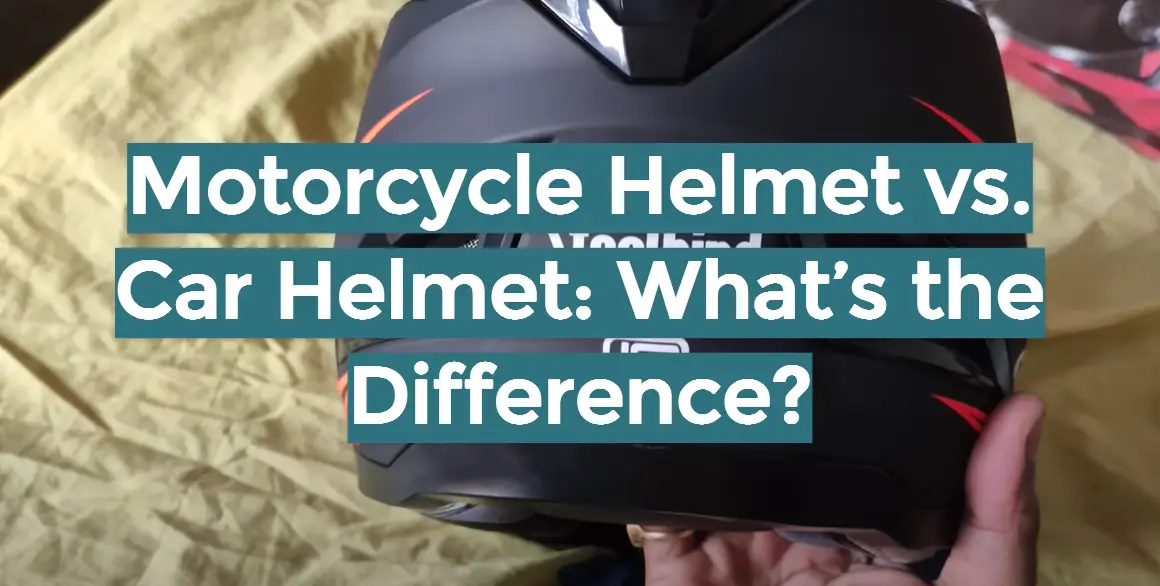



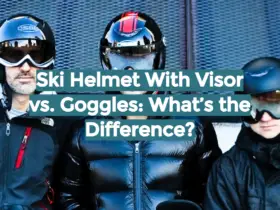
Leave a Reply